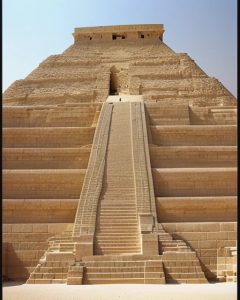Step back in time to the golden age of ancient Egypt, where a visionary ruler by the name of Djoser, also known as Netjerikhet, reigned supreme during the Third Dynasty of the Old Kingdom. His reign marked a pivotal period in Egyptian history, characterized by the emergence of a centralized government and the establishment of the first royal dynasty. But what truly sets Djoser apart from other pharaohs is his groundbreaking architectural masterpiece – the Step Pyramid at Saqqara. This monumental structure, standing at a towering height of over 200 feet, was the first of its kind and remains one of the most impressive and enduring legacies of the ancient world.
But Djoser’s legacy extends far beyond his iconic pyramid. As a prolific builder, he commissioned numerous construction projects throughout Egypt, including temples, palaces, and fortifications. His reign also saw advancements in agriculture, trade, and arts, leading to a flourishing economy and a period of prosperity for the ancient civilization. And let’s not forget the brilliant mind behind the Step Pyramid – the renowned architect Imhotep, whose ingenious design and engineering skills made Djoser’s vision a reality.
Of course, no ruler’s reign is without its challenges, and Djoser was no exception. Despite facing threats from neighboring kingdoms and internal conflicts, he managed to maintain peace and stability throughout his rule. And even thousands of years later, his legacy continues to fascinate and inspire, cementing his place as one of the most influential and revered pharaohs in Egyptian history.


